
You’ve had heel pain before and were ecstatic when it
finally went away. Weeks, or even months, of taking it easy, wearing the right shoes and orthotics, doing the right stretches and following the sound advice of your Podiatrist had paid off. You were able to hit the ground running, literally, without that gnawing pain, dull aches or any discomfort. Life was back to its happy, healthy self.
So what changed and why is the pain back?
Let us first assure you that pain doesn’t come back for no reason or without a cause. It’s also not a case of that it never healed in the first place. Your injury was indeed completely healed if you were able to resume life and daily activities without pain or symptoms. And it can be completely healed again.
However.
Just like how we can throw a ball through a window, repair the window, and throw a ball through it again, we can re-injure the same muscle, tendon, or ligament twice. But this time, there’s usually more to it.
When you sustain an injury for the first time, there’s a good chance it could be an unfortunate wrong-time, wrong-place injury. You ran too fast for the ball, tripped over, and
snap. Or you went for a 12-hour hike for the first time, something you’re likely never to do again, and your feet flared up from injury. In cases like these, and most accidents, as Podiatrists we look at managing your symptoms, relieving your pain, and helping you get better and heal as fast as possible.
But when an injury re-occurs, that’s a red flag for us to further investigate whether there is something else, either intrinsic (to do with your bones, joints, muscles, tissues) or extrinsic (to do with your footwear, with a sport you play and factors outside of your body) that is causing or contributing to your injury.
Usually, there is a cause we can control
This is why it’s important for us to conduct a comprehensive biomechanical assessment. A biomechanical assessment looks at:
- Your foot posture
- Muscle strength
- The range of motion through the joints of your feet
- The way you walk (gait analysis)
- Structural abnormalities
- Footwear assessment
- Various other tests depending on the findings
From this, we can deduce likely causes for your heel pain and tissue damage. If you have flat feet, wear footwear with relatively low support, occasionally run and get plantar fascial heel pain, it is likely that the repetitive strain on your fascia from running without support is causing damage and leading to pain. Or it could be that you’re getting the same pain at the back of your heel during soccer season again, when you’re training lots and wearing the same soccer boots that have a low-set heel. These boots will put greater strain on the insertion of your achilles tendon and paired with strenuous activity, can definitely overuse and damage your achilles tendon leading to heel pain.
Treating the cause, not just the symptoms
In these cases and so many more, it’s not just about treating your existing symptoms, but putting appropriate measures into place to stop the pain from coming back.
This is one of our key focuses here at
Perform Podiatry – preventing re-injury so it won’t keep bothering you in the future. We offer comprehensive biomechanical assessments from expert Podiatrists that specialise in Sports Medicine and Clinical Biomechanics. We’re proud to be trusted by hundreds of patients each month to help them feel great and perform at their best.
We often use
orthotics to control the movement of the feet and reduce the strain on otherwise overused and tired muscles. We also use strengthening techniques to get you back to your best.
If your injuries keep coming back or you’re experiencing any issues with your feet or legs, give us a call on
09 523 2333 and one of our friendly team will be happy to answer any questions you may have!
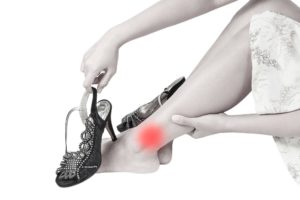 We spend a third of our life at work, with many of us on our feet all day, so it makes sense that the workplace can be a great source of foot pain. Pain at work not only impairs your (and your employees’, if you’re a business owner) performance, but also your mental well-being too. This is why we offer a range of occupational Podiatry services, to keep your team happy, healthy and at the top of their game. Whether it’s an injury sustained at work, or a pre-existing condition that is impacting your ability to carry out your work, our expert team here at Perform Podiatry have you covered.
We spend a third of our life at work, with many of us on our feet all day, so it makes sense that the workplace can be a great source of foot pain. Pain at work not only impairs your (and your employees’, if you’re a business owner) performance, but also your mental well-being too. This is why we offer a range of occupational Podiatry services, to keep your team happy, healthy and at the top of their game. Whether it’s an injury sustained at work, or a pre-existing condition that is impacting your ability to carry out your work, our expert team here at Perform Podiatry have you covered.
 We spend a third of our life at work, with many of us on our feet all day, so it makes sense that the workplace can be a great source of foot pain. Pain at work not only impairs your (and your employees’, if you’re a business owner) performance, but also your mental well-being too. This is why we offer a range of occupational Podiatry services, to keep your team happy, healthy and at the top of their game. Whether it’s an injury sustained at work, or a pre-existing condition that is impacting your ability to carry out your work, our expert team here at Perform Podiatry have you covered.
We spend a third of our life at work, with many of us on our feet all day, so it makes sense that the workplace can be a great source of foot pain. Pain at work not only impairs your (and your employees’, if you’re a business owner) performance, but also your mental well-being too. This is why we offer a range of occupational Podiatry services, to keep your team happy, healthy and at the top of their game. Whether it’s an injury sustained at work, or a pre-existing condition that is impacting your ability to carry out your work, our expert team here at Perform Podiatry have you covered.

 January is here and it’s that time of the year where parents are starting to get their kids ready for their new year at school. They’re getting their uniforms sorted, school books, bags, shoes, socks and anything else they may need. But kids aren’t the only ones heading back to school to spend many hours on their feet! In 2018, approximately 53,000 teachers will also return to school in New Zealand. But are teachers as prepared as their students when it comes to their feet?
Throughout the year, we see LOTS of teachers with sore, aching feet. And it’s not surprising – if you’re a teacher, you’re always on the go. Whether you’re up by the whiteboard, answering questions, walking between classrooms or supervising breaks, you don’t stop! At Perform Podiatry, we have a LOT of respect for our teachers and want to help you stay pain and injury free throughout the year. Hence, we’ve put together some tips to help keep you foot-smart and out of pain!
January is here and it’s that time of the year where parents are starting to get their kids ready for their new year at school. They’re getting their uniforms sorted, school books, bags, shoes, socks and anything else they may need. But kids aren’t the only ones heading back to school to spend many hours on their feet! In 2018, approximately 53,000 teachers will also return to school in New Zealand. But are teachers as prepared as their students when it comes to their feet?
Throughout the year, we see LOTS of teachers with sore, aching feet. And it’s not surprising – if you’re a teacher, you’re always on the go. Whether you’re up by the whiteboard, answering questions, walking between classrooms or supervising breaks, you don’t stop! At Perform Podiatry, we have a LOT of respect for our teachers and want to help you stay pain and injury free throughout the year. Hence, we’ve put together some tips to help keep you foot-smart and out of pain!
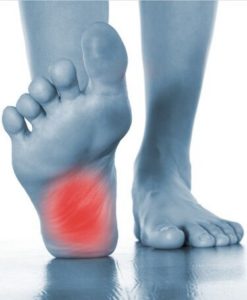
 Most ankle sprains are
Most ankle sprains are 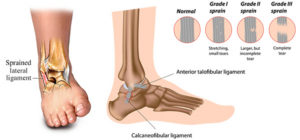
 Shin splints are otherwise referred to as
Shin splints are otherwise referred to as 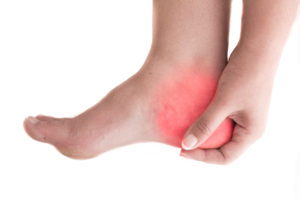 If you wake up dreading putting your feet on the ground and taking those first few steps because of an intense pain in your heels, then it sounds like you could have Plantar Fasciitis. Don’t worry! While this condition can be extremely limiting and painful, you’re in the perfect place as heel pain is one of our specialities here at Perform Podiatry. Here’s what you need to know about Plantar Fasciitis.
What is Plantar Fasciitis?
Your plantar fascia is a thick connective tissue band that runs from the bottom of your heel (where you’ll be feeling your pain) and spans out like a fan to connect into your toes. It works to help support your arch and foot and you engage it and put pressure on it every single time you take a step.
Plantar fasciitis describes the condition where your plantar fascia has become damaged, and as a result is painful and often inflamed. Damage occurs when the fascia is overloaded to a point that it can’t tolerate, and so it gets small tears through its fibres. If the damage is bad, the plantar fascia can be partially torn or may completely rupture. Factors that contribute to overloading and subsequent damage can include (among many more):
If you wake up dreading putting your feet on the ground and taking those first few steps because of an intense pain in your heels, then it sounds like you could have Plantar Fasciitis. Don’t worry! While this condition can be extremely limiting and painful, you’re in the perfect place as heel pain is one of our specialities here at Perform Podiatry. Here’s what you need to know about Plantar Fasciitis.
What is Plantar Fasciitis?
Your plantar fascia is a thick connective tissue band that runs from the bottom of your heel (where you’ll be feeling your pain) and spans out like a fan to connect into your toes. It works to help support your arch and foot and you engage it and put pressure on it every single time you take a step.
Plantar fasciitis describes the condition where your plantar fascia has become damaged, and as a result is painful and often inflamed. Damage occurs when the fascia is overloaded to a point that it can’t tolerate, and so it gets small tears through its fibres. If the damage is bad, the plantar fascia can be partially torn or may completely rupture. Factors that contribute to overloading and subsequent damage can include (among many more):
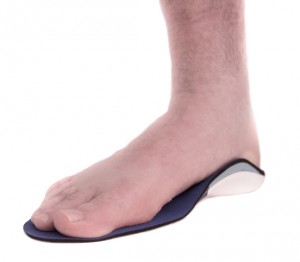
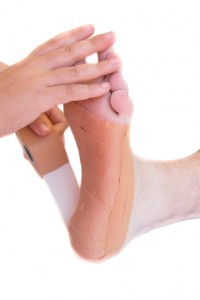
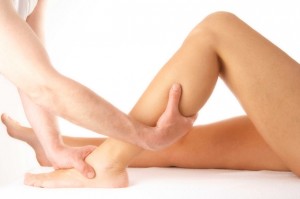
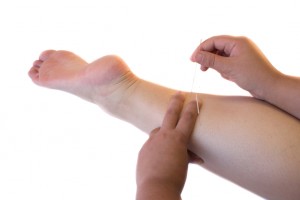 Your podiatrist will also provide helpful tips to get the best and fastest recovery, as well as referring you for an ultrasound or x-ray where necessary.
Perform Podiatry specialises in managing Plantar Fasciitis and heel pain
If you’re struggling with heel pain and suspect it may be Plantar Fasciitis, our expert team will get you on the road to recovery in no time! We understand that Plantar Fasciitis is frustrating and often limits our patients ability to conduct regular daily tasks when they’re on their feet and hence have a significant negative impact on their quality of life.
At Perform Podiatry, we’re proud to be leaders in the field of clinical biomechanics and specialise in the various causes of heel pain – and of course how to effectively treat them! We maintain a high level of clinical excellence in everything we do – come in, experience it for yourself, and stop putting up with your heel pain!
Your podiatrist will also provide helpful tips to get the best and fastest recovery, as well as referring you for an ultrasound or x-ray where necessary.
Perform Podiatry specialises in managing Plantar Fasciitis and heel pain
If you’re struggling with heel pain and suspect it may be Plantar Fasciitis, our expert team will get you on the road to recovery in no time! We understand that Plantar Fasciitis is frustrating and often limits our patients ability to conduct regular daily tasks when they’re on their feet and hence have a significant negative impact on their quality of life.
At Perform Podiatry, we’re proud to be leaders in the field of clinical biomechanics and specialise in the various causes of heel pain – and of course how to effectively treat them! We maintain a high level of clinical excellence in everything we do – come in, experience it for yourself, and stop putting up with your heel pain!